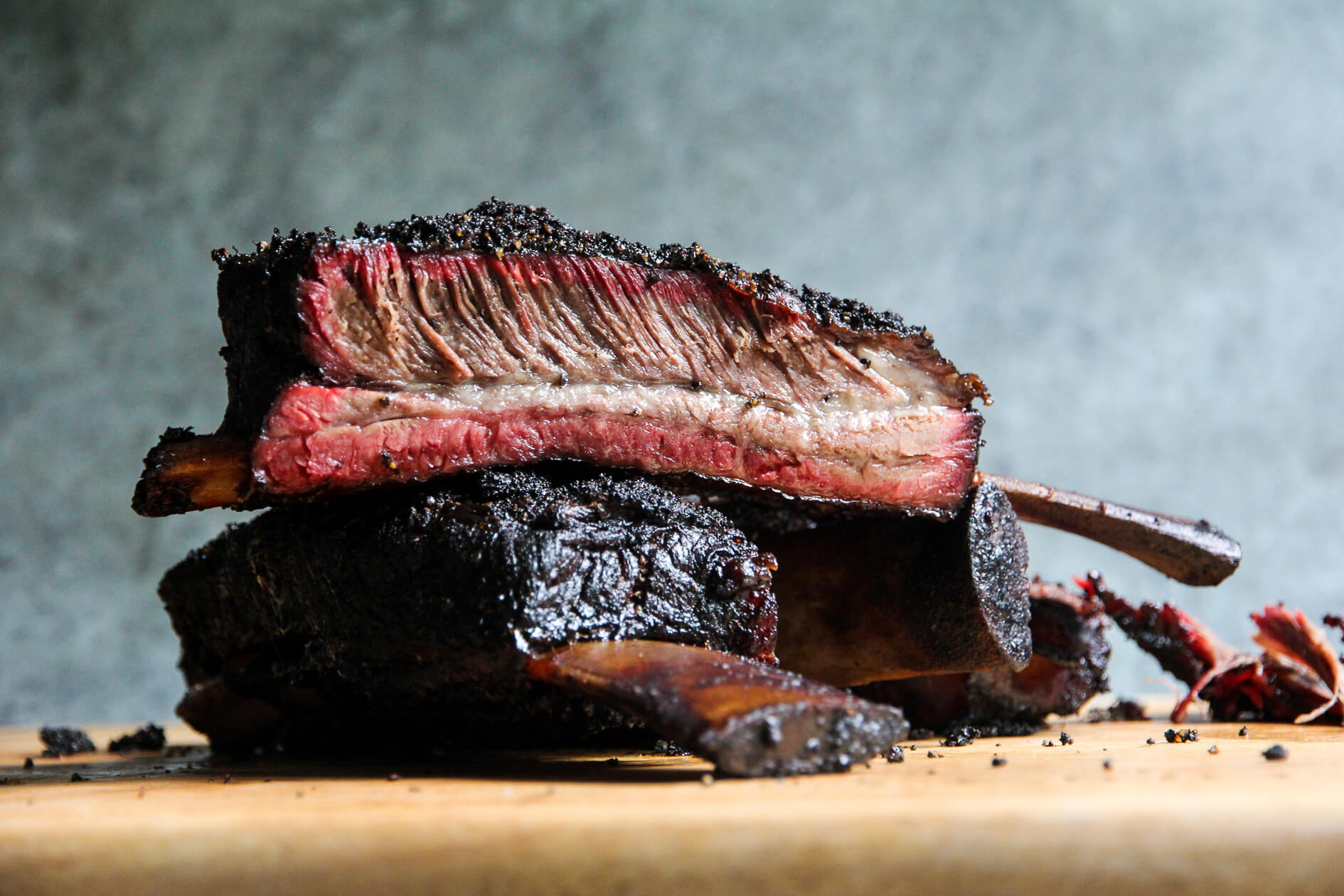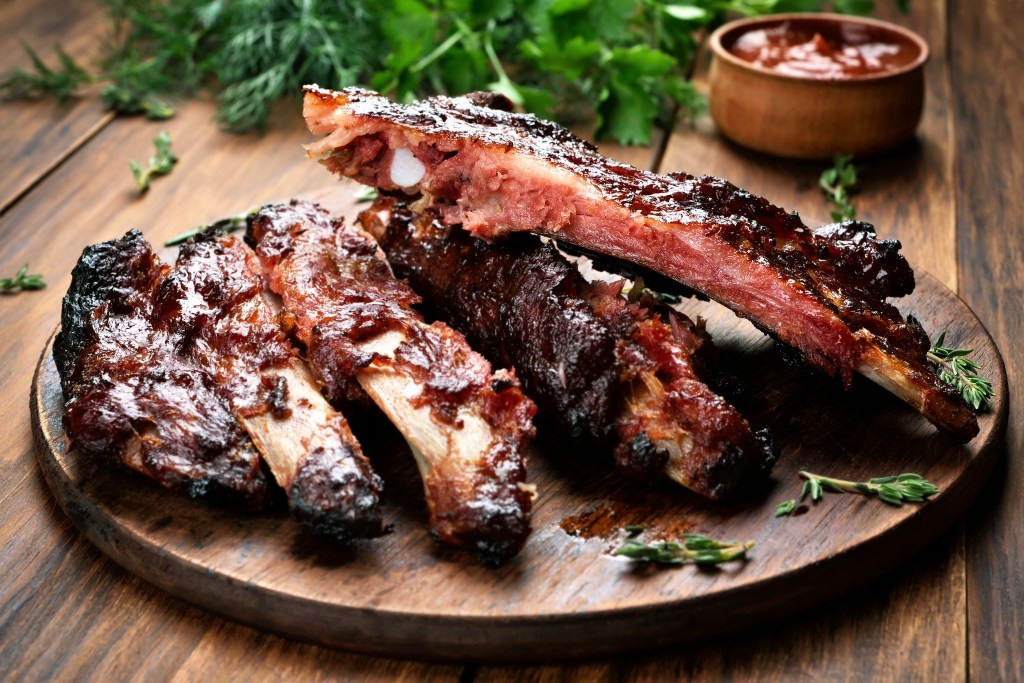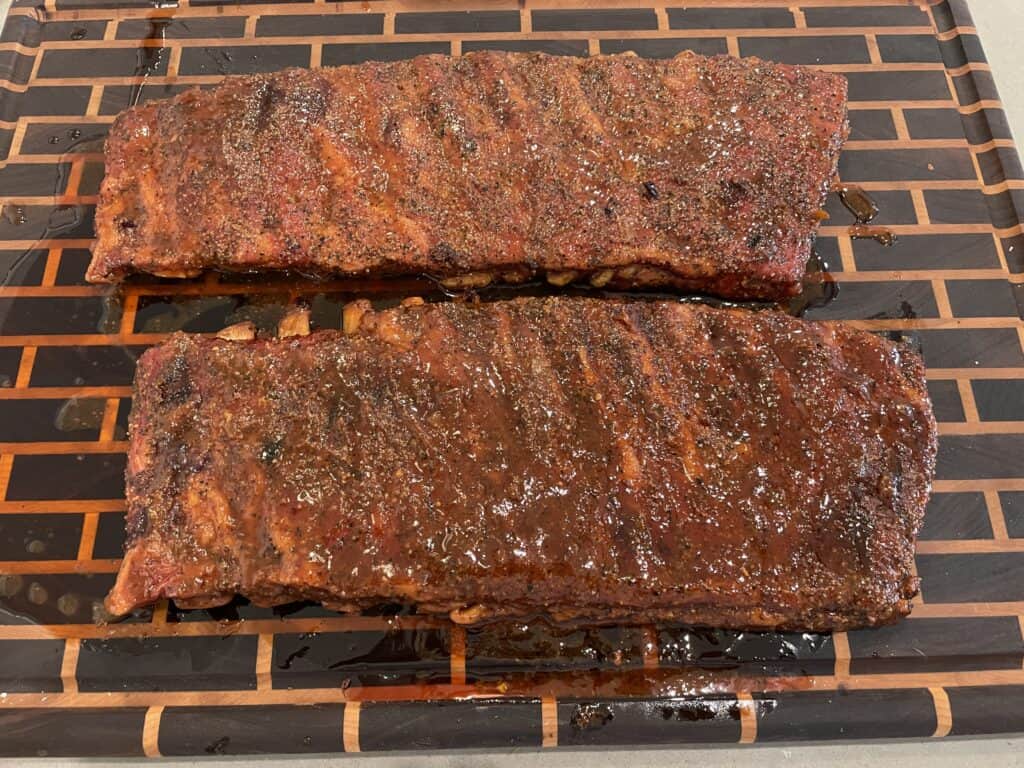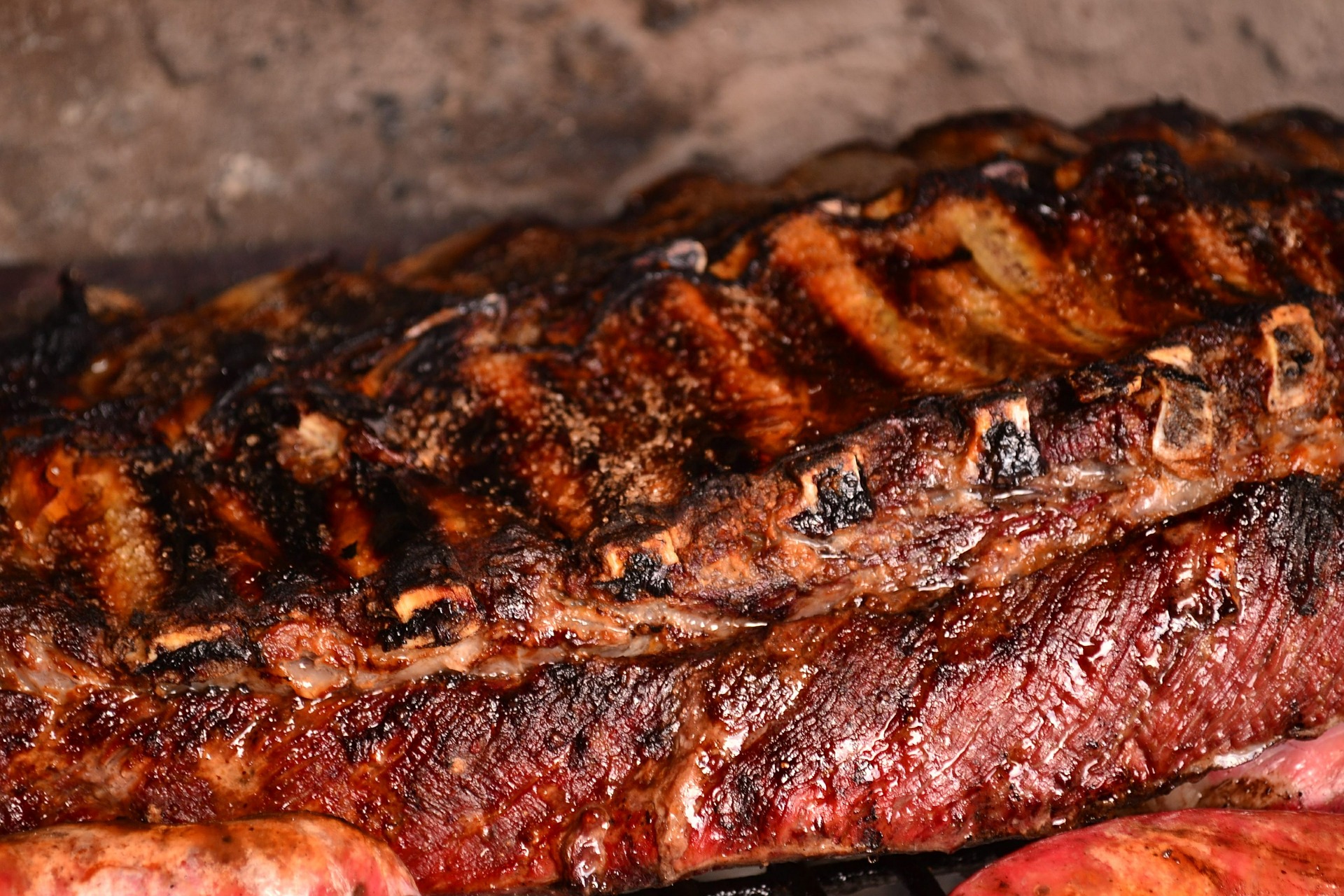Introduction To Beef And Pork Ribs

Beef and pork ribs are two popular choices when it comes to BBQ favorites. These delectable cuts of meat are known for their rich flavors and tenderness. Beef ribs, often larger and meatier, are prized for their bold and robust taste. On the other hand, pork ribs are famous for their tender and juicy meat that simply falls off the bone. Both beef and pork ribs offer unique attributes, making them contenders in any BBQ showdown. In this article, we will explore the differences between beef and pork ribs, their cooking methods, nutritional values, flavor profiles, and ultimately help you decide which one suits your taste buds the best.
Difference Between Beef And Pork Ribs
Beef and pork ribs differ in various ways, starting with the type of meat. Beef ribs come from cattle, while pork ribs are sourced from pigs. This distinction plays a significant role in the flavor and texture of the ribs.
In terms of appearance, beef ribs are typically larger and meatier compared to pork ribs. They are known for their robust and bold flavor, often described as rich and savory. On the other hand, pork ribs are more tender and juicy, with the meat easily falling off the bone. These differences make them suitable for different cooking methods and seasoning preferences.
Overall, the choice between beef and pork ribs boils down to personal preference and the desired taste and texture.
Taste And Texture Comparison
Beef and pork ribs offer distinct taste and texture experiences. Beef ribs, known for their robust flavor, have a rich and savory taste that is complemented by their meaty texture. They can be cooked to be tender and juicy or left with a slight chewiness. In contrast, pork ribs are incredibly tender and have a succulent, melt-in-your-mouth texture. The meat easily falls off the bone, making them a favorite among many BBQ enthusiasts. Whether you prefer the boldness of beef ribs or the tenderness of pork ribs, both options provide a delectable dining experience.
Beef Ribs: The BBQ Delight

Beef ribs are a BBQ delight that is sure to satisfy any meat lover’s cravings. These ribs are known for their robust flavor and meaty texture, making them a favorite choice for BBQ enthusiasts. There are different cuts of beef ribs, including short ribs and back ribs, each offering its own unique taste and tenderness. When it comes to cooking beef ribs, low and slow is the key. This method allows the meat to become tender and juicy while retaining all its flavors. Whether you choose to grill, smoke, or braise them, beef ribs are a true BBQ delight that will leave your taste buds wanting more.
Different Cuts Of Beef Ribs
There are various cuts of beef ribs that offer distinct flavors and textures. One popular cut is the short rib, which comes from the lower section of the ribcage. These ribs have a good amount of marbling, resulting in a rich and flavorful taste. Another cut is the back rib, which is taken from the prime rib roast. These ribs are larger and meatier, with a tender and juicy texture. Whether you prefer the succulent short ribs or the meaty back ribs, both cuts are sure to satisfy your BBQ cravings.
Best Cooking Methods For Beef Ribs
When it comes to beef ribs, the best cooking methods involve slow cooking to ensure tender and juicy results. One popular method is braising, where the ribs are seared and then simmered in a liquid, such as broth or wine, until they are fork-tender. Another option is smoking, which infuses the ribs with a smoky flavor by cooking them low and slow over indirect heat. Grilling is also a great choice, especially for more tender cuts like back ribs, where the high heat can create a delicious charred crust. Whichever method you choose, be sure to season the ribs with a flavorful rub or marinade to enhance their taste.
Pork Ribs: The BBQ Classic

Pork ribs are a true BBQ classic that has been enjoyed for generations. These ribs are known for their tender and juicy meat that practically melts in your mouth. The rich and savory flavor of pork ribs is a favorite among many BBQ enthusiasts. Whether you prefer baby back ribs, spare ribs, or St. Louis-style ribs, pork ribs are versatile and can be cooked using various methods such as grilling, smoking, or baking. The key to achieving tender and succulent pork ribs lies in slow cooking and proper seasoning. So fire up the grill and get ready to indulge in the BBQ classic of pork ribs.
Varieties Of Pork Ribs
There are several varieties of pork ribs that are enjoyed by BBQ enthusiasts around the world. One popular choice is baby back ribs, also known as back ribs or loin ribs. These ribs are smaller in size and tend to be more tender and lean. Another option is spare ribs, which come from the belly area of the pig and are larger and meatier than baby back ribs. St. Louis-style ribs are a variation of spare ribs that have been trimmed down to a more uniform shape. Each variety of pork ribs offers its own unique flavor and texture, making them a delicious choice for any BBQ feast.
Tips For Achieving Tender Pork Ribs
To achieve tender and juicy pork ribs, there are a few key tips to keep in mind. First, it is important to remove the membrane on the back of the ribs, as this can prevent them from becoming tender during cooking. Secondly, marinating the ribs before cooking can help to infuse them with flavor and break down the fibers, resulting in a more tender finished product. Additionally, using indirect heat and low, slow cooking techniques, such as smoking or braising, can help to ensure that the ribs cook slowly and evenly, resulting in tender and delicious meat. Lastly, allowing the ribs to rest for a few minutes after cooking will help to retain their juices and make them even more tender and flavorful.
Nutritional Comparison

When it comes to comparing the nutritional content of beef and pork ribs, there are some notable differences. In terms of calories, beef ribs tend to have a higher calorie count than pork ribs. For example, approximately 2253 calories are found in beef ribs, while baby back pork ribs contain around 1804 calories. In terms of saturated fat, beef ribs also tend to have higher levels compared to pork ribs. Beef ribs contain about 79 grams of saturated fat, whereas pork ribs have about 44 grams. However, when it comes to protein content, pork ribs take the lead, with around 85 grams compared to 78 grams in beef ribs. It’s important to keep these nutritional differences in mind when considering which type of ribs to include in your diet.
Calories And Fat Content In Beef And Pork Ribs
In terms of calories, beef ribs tend to have a higher count compared to pork ribs. Beef ribs contain approximately 2253 calories, while baby back pork ribs contain around 1804 calories. When it comes to fat content, beef ribs also have higher levels of saturated fat compared to pork ribs. Beef ribs contain about 79 grams of saturated fat, whereas pork ribs have about 44 grams. It’s important to keep these nutritional differences in mind when deciding which type of ribs to include in your diet. This information can be helpful for individuals who are monitoring their calorie and fat intake.
Protein And Other Nutrients Comparison
When it comes to protein content, pork ribs have a slight edge over beef ribs. Baby back pork ribs contain approximately 85 grams of protein, while beef ribs have around 78 grams. Protein is essential for muscle repair and growth, making pork ribs a good choice for those looking to increase their protein intake. Additionally, both beef and pork ribs are a good source of other important nutrients such as iron, zinc, and vitamin B12. These nutrients are necessary for maintaining overall health and supporting various bodily functions. However, it’s important to note that the exact nutrient content may vary based on the cooking method and seasoning used. So, make sure to consider your specific nutritional needs when choosing between beef and pork ribs.
Flavor And Seasoning

When it comes to flavor and seasoning, beef and pork ribs offer distinct profiles that can be enhanced with the right combinations of spices and marinades. Beef ribs have a rich and bold flavor, often described as savory and satisfying. They pair well with robust seasonings like a dry rub of garlic, paprika, and black pepper, or a tangy barbecue sauce.
On the other hand, pork ribs have a slightly sweeter taste and a tender texture. They can be seasoned with a variety of flavors, such as brown sugar, chili powder, and a touch of smokiness. Traditional barbecue sauces with a hint of sweetness complement pork ribs perfectly.
Ultimately, the choice of seasoning depends on personal preference and the desired flavor profile. Whether you prefer the boldness of beef ribs or the sweetness of pork ribs, experimenting with different seasonings can elevate the taste of your barbecue favorites.
Best Seasoning And Marinades For Beef Ribs
When it comes to seasoning beef ribs, the key is to enhance their rich and bold flavor. A classic dry rub of salt, black pepper, garlic powder, and paprika is always a winner, creating a savory and smoky taste. For those who prefer a bit of heat, adding cayenne pepper or chili powder can bring some spice to the mix. Marinades can also be used to infuse the beef ribs with additional flavors. A combination of soy sauce, Worcestershire sauce, brown sugar, and garlic can create a delicious marinade that tenderizes the meat and adds a touch of sweetness. Whether using a dry rub or a marinade, the key is to let the flavors penetrate the beef ribs by allowing them to rest for at least an hour before grilling or smoking. This will ensure a flavorful and mouthwatering barbecue experience.
Flavor Profiles Of Pork Ribs
Pork ribs have a unique flavor profile that is loved by many barbecue enthusiasts. The meat of pork ribs is known to be tender, juicy, and slightly sweet. The marbling of fat adds richness and enhances the overall flavor. The combination of the sweet and savory taste makes pork ribs incredibly delicious. The flavor can be further enhanced with the use of various seasonings and marinades. From tangy and sweet barbecue sauces to spicy dry rubs, there are endless possibilities to bring out the best flavors in pork ribs. Whether you prefer a smoky and bold taste or a sweeter flavor, pork ribs have a versatility that caters to different preferences. These flavor profiles make pork ribs a timeless BBQ classic.
Conclusion

In conclusion, the battle between beef and pork ribs is a never-ending debate among BBQ enthusiasts. Both beef and pork ribs offer unique flavors and textures that cater to different preferences. Beef ribs provide a robust and meaty experience, while pork ribs are loved for their tender and juicy meat. The choice between beef and pork ribs ultimately boils down to personal preference. So, whether you prefer the bold flavors of beef ribs or the classic taste of pork ribs, both options are guaranteed to bring a mouthwatering experience to your BBQ feast.
Pros And Cons Of Beef And Pork Ribs
Beef and pork ribs both have their own set of pros and cons. When it comes to beef ribs, the pros include their large size and meaty texture, which offers a satisfying and substantial eating experience. However, the higher fat content in beef ribs may be a concern for those watching their dietary intake. On the other hand, pork ribs are known for their tenderness and juiciness, making them a BBQ classic. The leaner nature of pork ribs can be seen as a pro for those looking for a healthier option. Ultimately, the choice between beef and pork ribs depends on personal preference and dietary needs.
Personal Preference And Final Thoughts
When it comes to choosing between beef and pork ribs, personal preference plays a significant role. Some people prefer the robust and meaty flavor of beef ribs, while others enjoy the tenderness and juiciness of pork ribs. It ultimately comes down to individual taste and the desired eating experience. Both beef and pork ribs have their own unique qualities and can be prepared in various delicious ways. Whether you’re a fan of the hearty and satisfying beef ribs or the classic and succulent pork ribs, the BBQ experience is sure to be a flavorful and satisfying one. So fire up the grill and indulge in your favorite ribs for a BBQ feast to remember.
FAQ About Beef Vs Pork Ribs: Battle Of The BBQ Favorites
Q: What are the main differences between beef ribs and pork ribs?
A: Beef ribs come from cattle while pork ribs come from pigs. Beef ribs are larger and more meaty, whereas pork ribs are smaller and fattier.
Q: Which type of ribs is more flavorful?
A: Both beef and pork ribs are flavorful, but they have distinct tastes. Beef ribs are known for their rich and beefy flavor, while pork ribs have a sweeter taste due to the fat content.
Q: Are there differences in cooking methods for beef and pork ribs?
A: Yes, beef ribs are generally cooked low and slow to tenderize the meat, while pork ribs can be cooked faster but still require a slow cooking process for optimal tenderness.
Q: Which type of ribs is more tender?
A: Pork ribs are typically more tender than beef ribs due to their higher fat content and marbling.
Q: Can beef ribs and pork ribs be cooked using the same BBQ techniques?
A: Yes, both beef and pork ribs can be cooked using similar BBQ techniques such as smoking, grilling, or slow cooking. However, the cooking times and temperatures may vary.
Q: Which type of ribs is more popular among BBQ enthusiasts?
A: Both beef and pork ribs have their own fan base among BBQ enthusiasts. Beef ribs are favored for their meatiness and robust flavor, while pork ribs are loved for their tenderness and juicy texture.
Q: Are there any health differences between beef and pork ribs?
A: Beef ribs tend to have higher protein content and lower fat content compared to pork ribs. However, both types of ribs can be enjoyed in moderation as part of a balanced diet.

The Bird ‘n’ Bike Cafe ‘n’ Bar is a charming establishment nestled in the heart of Chiltern, Victoria, where locals and visitors alike come together to enjoy delicious food, great company, and a warm, welcoming atmosphere. With 1187 likes and 136 check-ins, it’s clear that the Bird ‘n’ Bike has captured the hearts of many. Our cafe and Bar is open from Wednesday to Sunday, inviting guests to start their day with us from 8 am to 2:30 pm. Whether you prefer to dine in and savor the cozy ambiance or grab a delicious meal, we’ve got you covered.